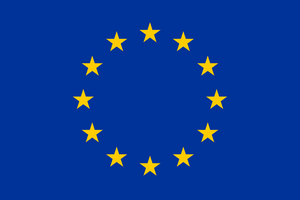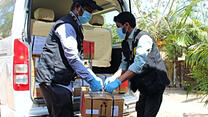I am Ayesiga Benna. I am a nurse working for the International Rescue Committee in Uganda and I’m on the frontline making sure that the country is ready and able to fight Ebola.

My work is based in Kyaka settlement, a refugee camp in south-west Uganda home to thousands of refugees coming mainly from neighbouring Democratic Republic of Congo (DRC).
An Ebola outbreak has been underway in eastern DRC since last August. At the height there were 10-15 cases confirmed every day. In June the first case was confirmed here in Uganda, which thanks to the hard work the country had done preparing for this scenario, did not spread. We’re working to ensure that if this happens again, we are still ready, despite the lower case numbers in DRC. Until the outbreak is over in DRC we need to stay alert.

Ebola is a serious disease. It can infect anyone who comes into contact with its victims. You can lose families, you can lose friends, and you can lose health workers. This is why we have to really fight it, so we can do something to protect ourselves and our families, the rest of the country, and refugees who are coming into the country.
The health facility where I work is the first point of call to prevent the spread of Ebola, as people entering the settlement can be assessed.
How do we detect cases of Ebola? We use a process called the triage, which allows us to rapidly identify potential cases, and then treat patients in isolation from the rest of the population.
There are three key steps.
Step 1 – hand-washing

Everyone who is coming into the facility is entering from one entrance and exiting the same way. Before they come in they must first wash their hands with chlorinated water from one of the taps provided. Washing your hands is really important to prevent potential transmission.
Step 2 – the screening process

This is the screening phrase. Here you can see me using a thermometer to take the person’s temperature. This is an important tool as a high temperature can be a common symptom for the disease. If a person’s temperature is above 38 degrees we have to assess.
Of course, at the screening process, we are not just taking their temperature: this is a full assessment. We are also looking for other signs and symptoms, such as bleeding or vomiting.
We must also find out if a suspected patient has had any other contact with people, or whether they have travelled to an area where an Ebola outbreak has occurred.
We have to be very careful. As you can see even members of staff are being screened before they are allowed to enter the settlement.
Step 3 – isolation and treatment begins

If a person at the screening process is displaying the symptoms of Ebola, we immediately isolate them before taking them to another facility where they can be tested for Ebola and begin to receive treatment.
It is essential that patients are treated in complete isolation, as Ebola is very contagious and can easily spread to the rest of the population. In this room, expert nurses and doctors, dressed in full protective gear, attend to the patient. This is where we can give patients the proper care and treatment that they need to fight the disease.
It makes me proud that I am working to save lives. We are working hard so that the disease does not spread, because can cause a lot of deaths. I am proud to be doing this work. I am a trained health professional, I am skilled, and I love what I am doing.
The International Rescue Committee partners with the European Union to provide life-saving support to people caught in conflict and disasters around the world. Our work funded by the EU enables people to survive, recover and rebuild their lives.




